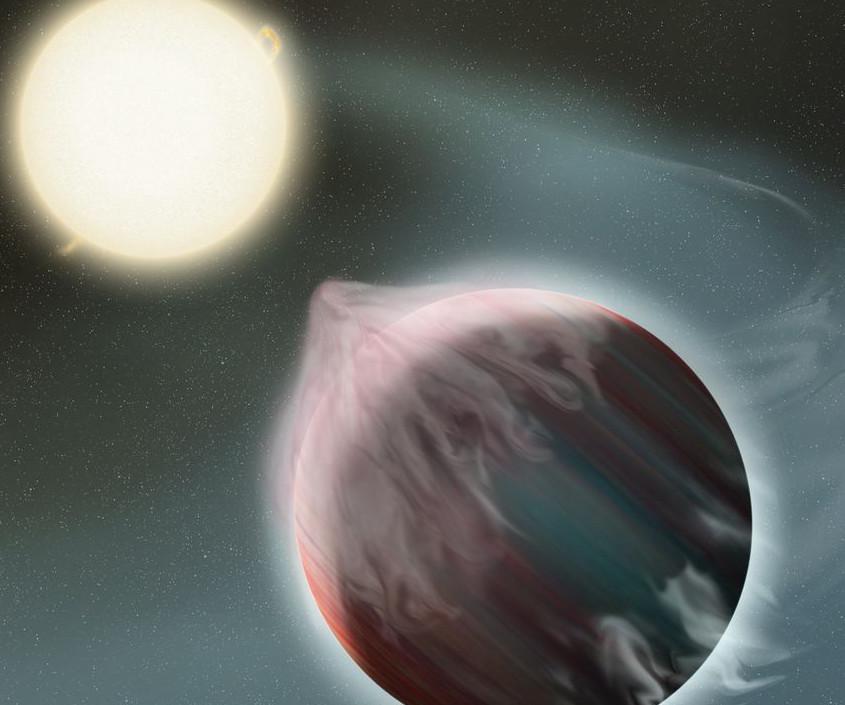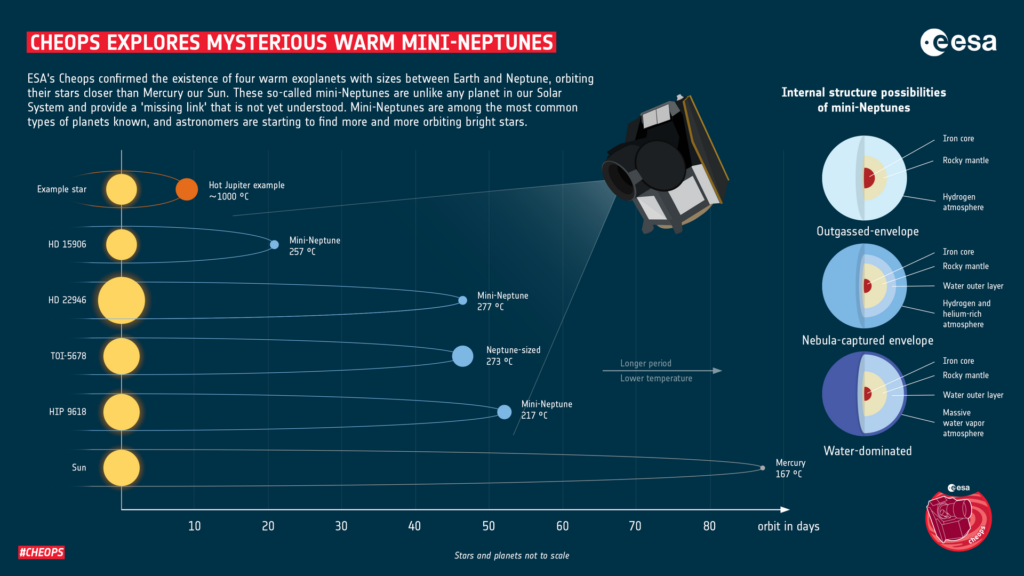The Cheops telescope has confirmed the existence of four previously unknown exoplanets. All of them belong to the class of so-called warm mini-Neptunes.
What are mini-Neptunes
Mini-Neptunes are bodies that occupy an intermediate position between rocky planets like Earth and gas planets like Neptune. There are no analogues of such objects in the Solar System, however, apparently, they are very widespread in the Milky Way.

At the moment, astronomers’ knowledge of mini-Neptunes is full of gaps. This is because they are smaller, colder and harder to find than the so-called hot Jupiters. While such bodies orbit their star in a matter of hours or days and usually have a surface temperature of more than 1000 °C, the orbits of mini-Neptunes run further, their orbital periods are longer and they have a colder surface with a temperature of only about 300 °C.
Discovery of the Cheops Telescope
The first signs of the existence of four newly discovered mini-Neptunes were found by the TESS telescope. The problem is that this device observes each star for only 27 days, after which it changes a section of the sky. This is not enough to record repeated transits of exoplanets and confirm their existence.

Therefore, astronomers used Cheops, aiming it at the stars at the expected time of new transits. The European telescope managed to fix them, thereby confirming the existence of mini-Neptunes and determining their basic characteristics. The four newly discovered planets have orbital periods ranging from 21 to 53 days. The equilibrium temperatures of their surface range from 217 to 277 °C.
One of the main questions about mini-Neptunes is related to their internal structure. According to existing ideas, they should have an iron-rocky core surrounded by a thick shell of less dense material. It can be either a thick atmosphere consisting of a hydrogen-helium mixture or water vapor, or a global ocean. To answer this question, scientists need to know the average density of mini-Neptunes.
Therefore, astronomers plan to conduct additional observations of the newly found four mini-Neptunes using ground-based telescopes to determine their masses. In the future, they may become objects for study by both the James Webb Observatory and the new Ariel telescope, which will be launched by ESA at the end of this decade.
According to https://www.esa.int
Follow us on Twitter to get the most interesting space news in time
https://twitter.com/ust_magazine

